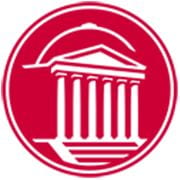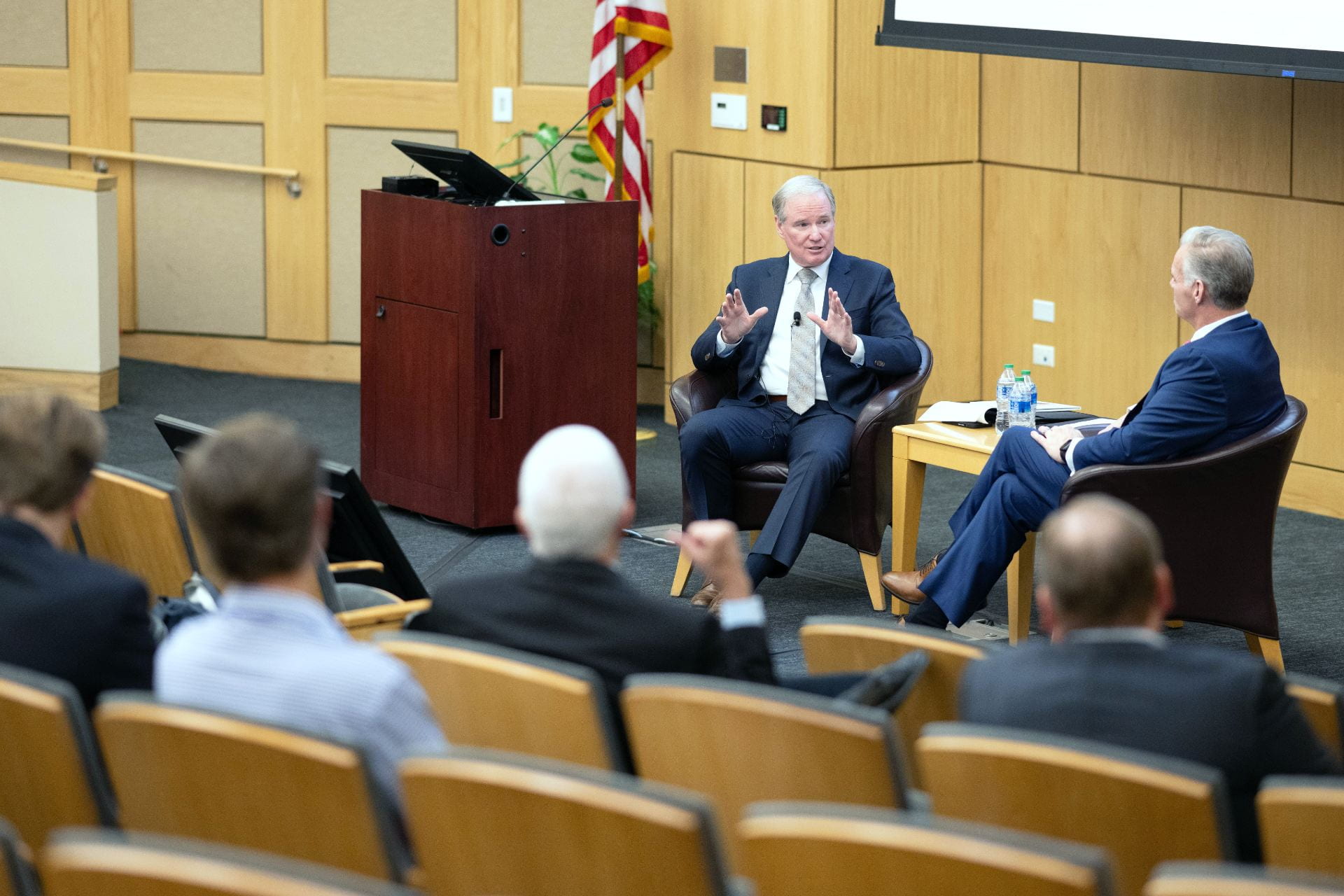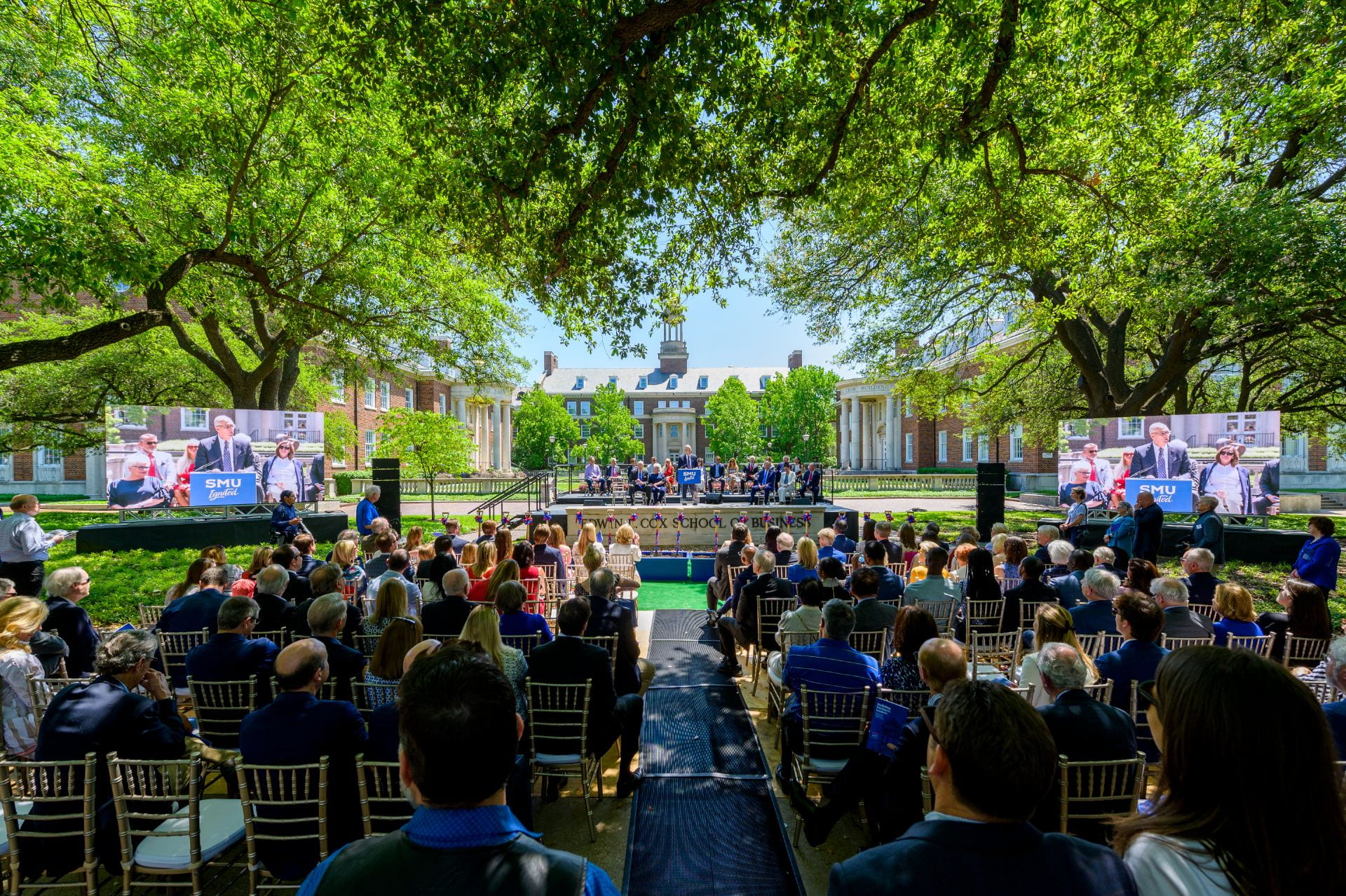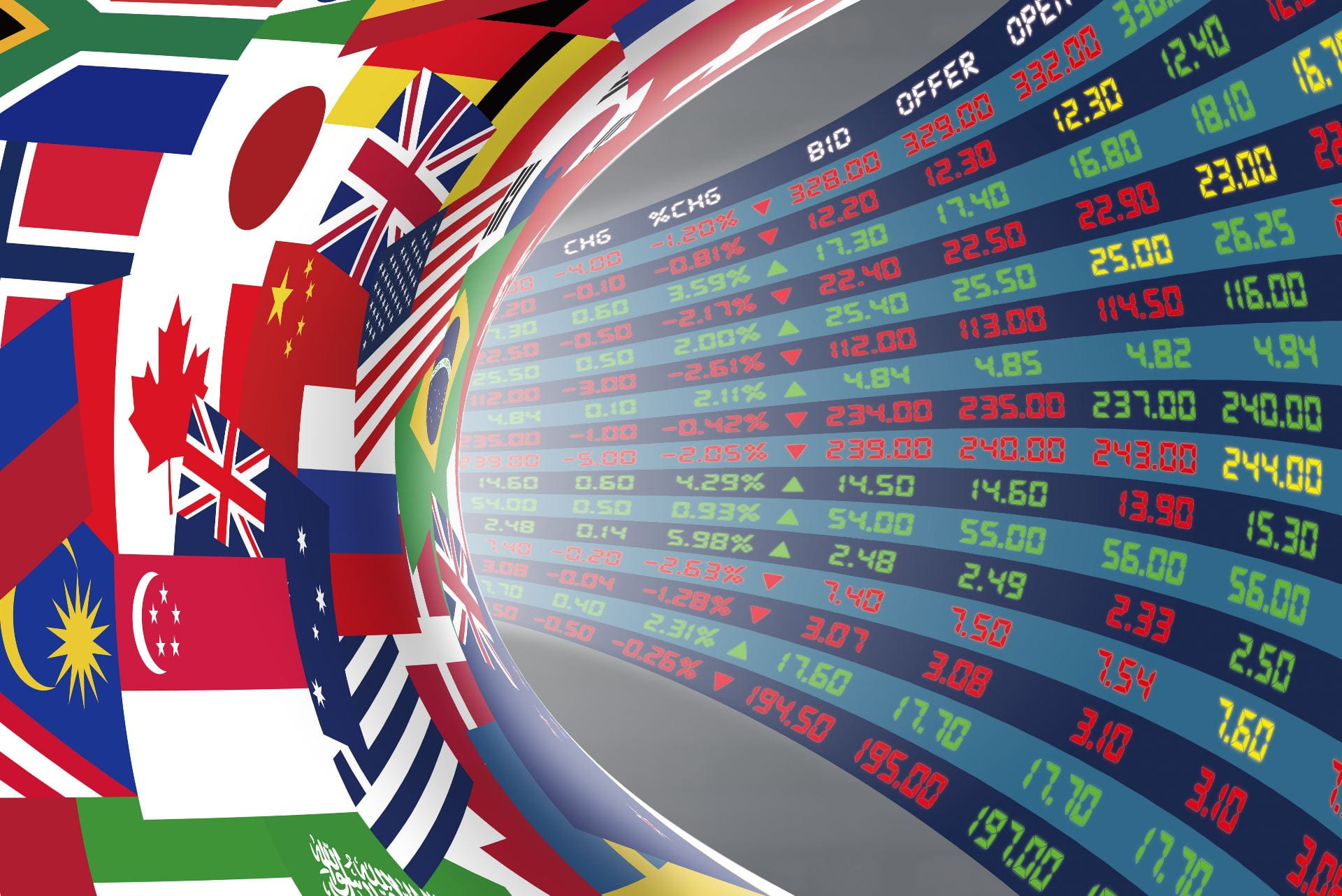Innovation and entrepreneurship function symbiotically in the business world—there is no entrepreneurship without innovation, and innovation requires entrepreneurship to bring it to life. Both are necessary to positively influence society. Perhaps no one knows this better than Simon Mak, executive director of the Caruth Institute for Entrepreneurship and professor of practice in entrepreneurship at the SMU Cox School of Business.
“A lot of people mix the two words,” Mak says. “Innovation is basically adapting whatever it is that you’re doing in response to changes that are going on in the marketplace. We all have to adapt as organizations, as people, and that’s innovation.
Entrepreneurship is taking an innovation and seeing if we can commercialize it, seeing if there’s an opportunity to build a business model around it. Really, entrepreneurship is all about scaling innovations to impact society.”
At the Cox School of Business, entrepreneurship is such a key focus that it’s the only business school in the world with three different entrepreneurship hubs: the Caruth Institute for Entrepreneurship, founded 53 years ago; the Hart Institute for Technology, Innovation and Entrepreneurship, established in 2019; and the Spears Institute for Entrepreneurial Leadership, newly created in 2022.
These three components form the new Cox Innovation Triad, a linchpin through which SMU Cox is building an entrepreneurship ecosystem to support its innovation vision.
Dean Matthew Myers introduced the concept behind the triad in our previous issue. Here, Mak explains how the triad will work in practice.
Each of the three institutions serves a unique purpose but will work together to benefit students and the local and broader business community. Ultimately, the goal, Mak says, is to meet economic challenges worldwide. With this triad, the Cox School aims to be at the forefront of tackling these global economic challenges.
A History of Entrepreneurship at Cox
The Cox School’s emphasis on entrepreneurship began in 1970 with the Caruth Institute for Entrepreneurship, the oldest arm of the triad. Before this, according to Mak, no university taught entrepreneurship through an entrepreneurship institute.
“We believe we were the first entrepreneurship institute in the world,” he says. “So, it’s kind of a unique place to be. The whole mission of the Caruth Institute was to promote entrepreneurship to students ages eight to 80, so they can give it a shot and increase the probability of success. [Caruth] is the foundation of the Cox School’s entrepreneurship ecosystem.”
In 2019, through the gracious support of SMU Alumna Linda Wertheimer Hart ’65 and Mitch Hart, the Hart Institute for Technology, Innovation and Entrepreneurship was formed as a co-venture between SMU Cox and the SMU Lyle School of Engineering to nurture tech entrepreneurship. Through the Hart Institute—also known as HI-TIE—students have an opportunity to create new products and processes for the marketplace and develop business plans to determine how best to take their products to the world.
A generous gift from energy entrepreneur and philanthropist Dr. William S. Spears made possible the Spears Institute for Entrepreneurial Leadership. Launched in spring 2022, the Spears Institute completes the Innovation Triad with an emphasis on startup investment. It allows students to participate in the new innovation economy, teaching them how to invest in University-driven research and development and how to build pipelines for revenue.
“It was a recognition that business schools needed to be a little bit more intentional about scaling innovations, specifically through startups,” Mak says. “And so these three institutes represent three distinctly different yet intertwined aspects of entrepreneurship and provide critical support to expand a thriving startup ecosystem.”
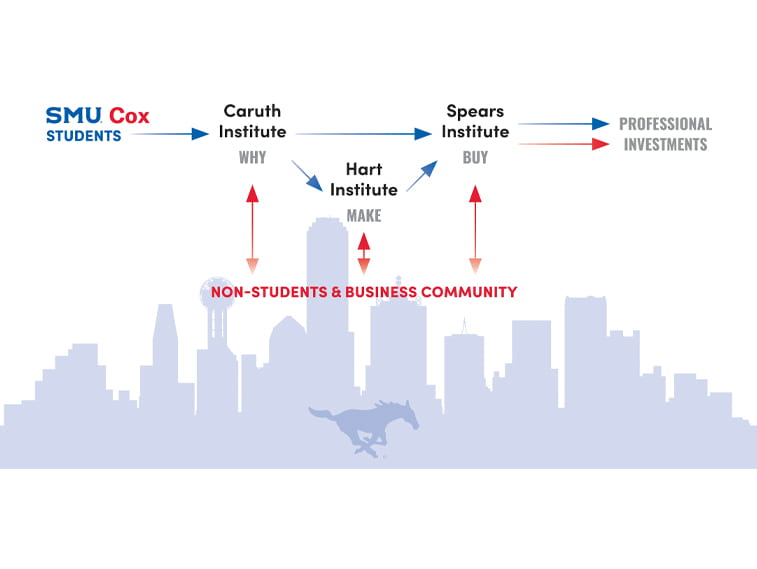
How the Innovation Triad Works
Each of the institutes has its distinct purpose, and they work together to create a journey for students and the business community. The Caruth Institute speaks to “the why side,” the Hart Institute fulfills “the make side” and the Spears Institute explores “the buy side” of successful innovation and entrepreneurship.
First, Caruth offers curricula focused on why entrepreneurship and innovation are critical to the future of business. It’s important for Cox students to understand this both for their careers and the economy itself. Within the Caruth Institute, students will take basic courses, work on projects and complete assignments pertaining to why they want to pursue entrepreneurship.
Next, if students decide to pursue a tech focus, they’ll enter the Hart Institute, where they can build hardware and software prototypes. This is the make side of innovation, focused on building new, marketable business ideas. “It provides the perfect blend of engineering and business students working together to produce and commercialize new technologies, innovations and research,” Cox School of Business Dean Matthew B. Myers wrote in his recent piece, “The Cox Innovation Triad: An Entrepreneurial Investment in the Next Era of Business Education.”
Lastly, students will pitch their innovations to the Spears Institute, whether they went through Hart with a tech focus or moved directly from Caruth. This functions as the buy side of innovation—the building of new leaders in the world of entrepreneurial investments. “This will create opportunities not only for students to invest in new ventures but also to generate earnings for the School to reinvest back into initiatives such as scholarships,” Dean Myers wrote.
A Two-Sided Mission
The objective of this entrepreneurship ecosystem at SMU Cox is two-pronged. On one side is the obvious benefit to the students in the Innovation Triad, and on the other is targeting the business community at large, as well as faculty and staff. Ultimately, the knowledge and experience the students gain should help shape the broader business world.
“If we begin with the end in mind, what we want students to get out of it is launching real startups,” Mak says. “We know that startups and new, young companies are the drivers of economic growth. As academics, our job is to help students craft ideas that resonate with them and help them think about how it positively impacts the world. That’s the fun part.”
This year, Mak is seeing record enrollment within the entrepreneurship program: in the current semester alone, there are about 400 undergrad and 500 graduate students taking classes.
“If you’re a student and you’re thinking about business school, you have to think about how individual universities and business schools help their students go beyond the current training and where entrepreneurship is at the forefront,” Mak says. “If you come to SMU Cox as an undergrad or graduate student, all these resources are at your command. And you layer in the city of Dallas, which is booming, and Texas, which is booming.”
“Having the opportunity to learn all aspects of innovation will give our students a competitive edge like few business schools are positioned to give,” says Dean Myers.
Mak, who was also on the Dallas Mayor’s Task Force on Innovation and Entrepreneurship to research how the city can boost its startup and tech presence, says the Cox Innovation Triad’s outcomes will directly benefit Dallas and its corporations and nonprofits. “I foresee having a parallel track for what is known as corporate entrepreneurship,” he says. “As you know, a lot of corporations now are trying to innovate. Corporations either innovate or disappear. So, everything we’re teaching in the Innovation Triad can also support corporate America and nonprofits.”
No matter what industry, field or job a student aspires to enter, Mak says, the skills taught in the three Cox entrepreneurship institutes can be applied anywhere in any career.
“Ultimately,” Mak says, “we want to help our students create startups that scale and positively impact the world.”



